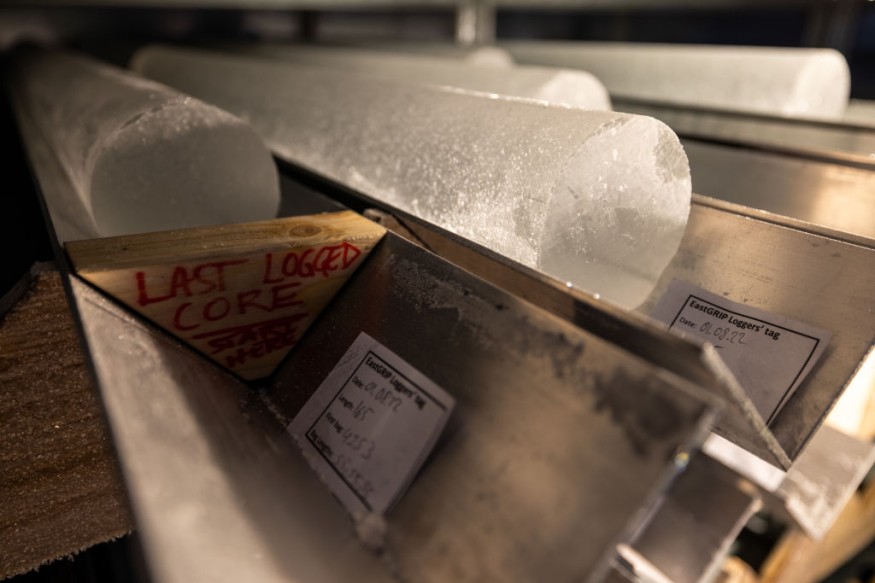Ice cores are long cylinders of ice drilled from glaciers and ice sheets that store the history of the climate and the environment in their layers.
By analyzing the physical and chemical properties of the ice and the air bubbles trapped within it, scientists can infer the changes in temperature, precipitation, atmospheric circulation, and greenhouse gas concentrations over different timescales, from years to millennia.
Ice cores also contain traces of volcanic eruptions, dust storms, solar activity, and human activities, which can affect the climate and the environment in various ways.
How ancient ice reveals the secrets of Earth's climate history

To better understand the role atmospheric carbon dioxide plays in Earth's climate cycles, scientists have long turned to ice cores drilled in Antarctica, where snow layers accumulate and compact over hundreds of thousands of years, trapping samples of ancient air in a lattice of bubbles that serve as tiny time capsules.
By analyzing the chemical composition of these bubbles, scientists can reconstruct the past variations of temperature, precipitation, atmospheric circulation, and greenhouse gas concentrations.
However, ice cores from Antarctica are not the only sources of information about Earth's climate history.
Ice cores from other regions, especially the tropics, can provide complementary perspectives and insights into the regional and global climate dynamics.
The tropics are particularly important because they play a critical role in Earth's climate system, influencing the patterns of rainfall, winds, and ocean currents.
One of the most challenging and rewarding places to drill ice cores is the world's highest tropical mountain, Nevado Huascarán, located in the Cordillera Blanca of Peru.
This mountain, which reaches an elevation of 6,768 meters above sea level, hosts the largest ice cap in the tropics and preserves a unique record of climate variability over the past several millennia.
What the new ice cores from Huascarán reveal about climate variability
In 2019, a team of scientists from the Byrd Polar and Climate Research Center at The Ohio State University, led by Professor Lonnie Thompson, successfully drilled four ice cores from Huascarán, two from the lower Col site (6,050 meters) and two from the higher Summit site (6,768 meters).
These ice cores, which are the longest and highest ever retrieved from the tropics, contain valuable information about the changes in temperature, precipitation, atmospheric circulation, and volcanic activity in the region.
One of the main findings from the new ice cores is that the oxygen stable isotope (δ18O) record, which is a proxy for temperature and precipitation, strongly reflects the variability of the tropical Pacific climate, especially the El Niño Southern Oscillation (ENSO).
ENSO is a natural phenomenon that involves periodic fluctuations of sea surface temperatures and atmospheric pressure in the equatorial Pacific, affecting the weather and climate around the world.
The ice core δ18O record shows that the influence of ENSO on the Huascarán climate has strengthened significantly in the last six decades, possibly due to the global warming trend.
Another finding from the new ice cores is that the δ18O record from the higher Summit site appears to be more sensitive to large-scale climate change than the δ18O record from the lower Col site.
This suggests that the Summit site, which is closer to the tropopause (the boundary between the troposphere and the stratosphere), may capture the signals of upper atmospheric temperature changes more clearly than the Col site, which is more influenced by local factors such as moisture sources and wind patterns.
The new ice cores from Huascarán also provide information about the history of volcanic eruptions in the region, which can have significant impacts on the climate and the environment.
By measuring the concentrations of sulfate, dust, and volcanic ash in the ice cores, scientists can identify the timing and magnitude of past volcanic events, as well as their sources and chemical compositions.
For example, the ice cores record the eruption of the nearby Huaynaputina volcano in 1600, which was one of the largest and most explosive eruptions in South America in the last 2,000 years.
The ice cores also record the eruptions of other volcanoes in Peru, Ecuador, Chile, and Indonesia, some of which may have triggered global cooling episodes.
The new ice cores from Huascarán are a remarkable achievement of scientific exploration and a valuable resource for climate research.
They offer a rare and detailed glimpse into the past climate variability of the tropics, and how it is connected to the global climate system.
They also provide a baseline for assessing the current and future changes in the tropical climate, and their implications for the water resources, ecosystems, and human societies in the region.
© 2025 NatureWorldNews.com All rights reserved. Do not reproduce without permission.





